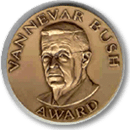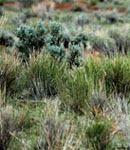 |

|
 |
 Live on the Web, June
28th
Live on the Web, June
28th
The National Science Foundation (NSF) will host an interactive news
conference on Thursday, June 28, to communicate preliminary results
of a study on NSF's Urban Systemic Initiatives (USI) in K12 mathematics
and science education, a program begun in 1993. To announce these
results, NSF has organized its first multi-site online news conference
in an application of the latest "Grid" networking technology.
Live, streamed video of the entire event will be easily accessible
to anyone with an Internet connection between 1:00-3:00 p.m. on
June 28.
More...
(posted June 27, 2001)
|
 |
|
 Laser
"Scalpel" Improves Popular Eye Surgery Laser
"Scalpel" Improves Popular Eye Surgery
Researchers have developed a procedure for using an ultrafast laser
to make clean, high-precision surgical cuts in the human cornea.
The procedure is expected to advance the popular LASIK eye surgery
by reducing complications due to traditional manual cutting techniques.
The laser technology and surgical procedures were developed at the
University of Michigan by a joint team of physicists and ophthalmologists
from the National Science Foundation (NSF) Center for Ultrafast
Optical Science (CUOS) and the university's Kellogg Eye Center.
More...
(posted June 15, 2001)
|
 |
|
 NSF Scholarship for Service
Awards Announced at Information Security Colloquium
NSF Scholarship for Service
Awards Announced at Information Security Colloquium
National Science Foundation (NSF) director Rita Colwell today announced
NSF's first Scholarship for Service program awards to six institutions
as part of an interagency, public/private effort to meet the nationwide
needs for computer security and information assurance professionals.
The new scholarships, which will be awarded through Carnegie Mellon,
Iowa State and Purdue Universities, the Universities of Idaho and
Tulsa, and the Naval Postgraduate School in Monterrey, California,
will provide more than $8.6 million in first-year funding to educate
and develop these new professionals for careers in the government
or private sector.
More...
(posted May 29, 2001)
|
 |
|
 New
Form of Nitrogen: A Semiconductor New
Form of Nitrogen: A Semiconductor
Scientists at the Carnegie Institution of Washington reported today
they have created a new form of nitrogen by subjecting ordinary
nitrogen gas, which makes up about 75 percent of the earth's atmosphere,
to pressures of up to 2.4 million times the atmospheric pressure
at sea level. At these pressures the nitrogen is transformed to
an opaque, semiconducting solid. The scientists also reported that,
once created, the semiconducting solid can remain stable even when
the pressure returns to normal. The team, which is partially supported
by the National Science Foundation (NSF) Division of Materials Research,
published the results in the May 10 issue of Nature. More...
(posted May 29, 2001)
|
 |
|
 Harold
Varmus, Lewis Branscomb are Honored with the Vannevar Bush Award
Harold
Varmus, Lewis Branscomb are Honored with the Vannevar Bush Award
The National Science Board (NSB) has named two renowned scientists
to receive the Vannevar Bush Award for lifetime achievement in science
and public service. Harold E. Varmus, former director of the National
Institutes of Health and a Nobel-prize holder for contributions
to understanding the mechanisms of cancer, and Lewis M. Branscomb,
a physicist, former NSB chair and one of the most compelling voices
in science and technology policy received the award May 23 at a
Department of State-hosted awards dinner. More...
(posted May 29, 2001)
|
 |
|
 Protecting
Plant Biodiversity Helps Safeguard Ecosystems Protecting
Plant Biodiversity Helps Safeguard Ecosystems
Human activity is shaping ecosystems such that they contain fewer
species of plants, at a time when levels of atmospheric carbon dioxide
and nitrogen pollution are on the rise. A study led by scientists
affiliated with the Cedar Creek (Minnesota) Long-Term Ecological
Research (LTER) site, funded by the National Science Foundation
(NSF), has found that prairie plots with greater plant biodiversity
respond to augmented carbon dioxide and nitrogen better than plots
with fewer plant species. If the findings hold true for ecosystems
worldwide, human simplification of ecosystems to those with fewer
numbers of species will hamper ecosystems' ability to remove carbon
dioxide and nitrogen from circulation. More...
(posted May 29, 2001)
|


|

